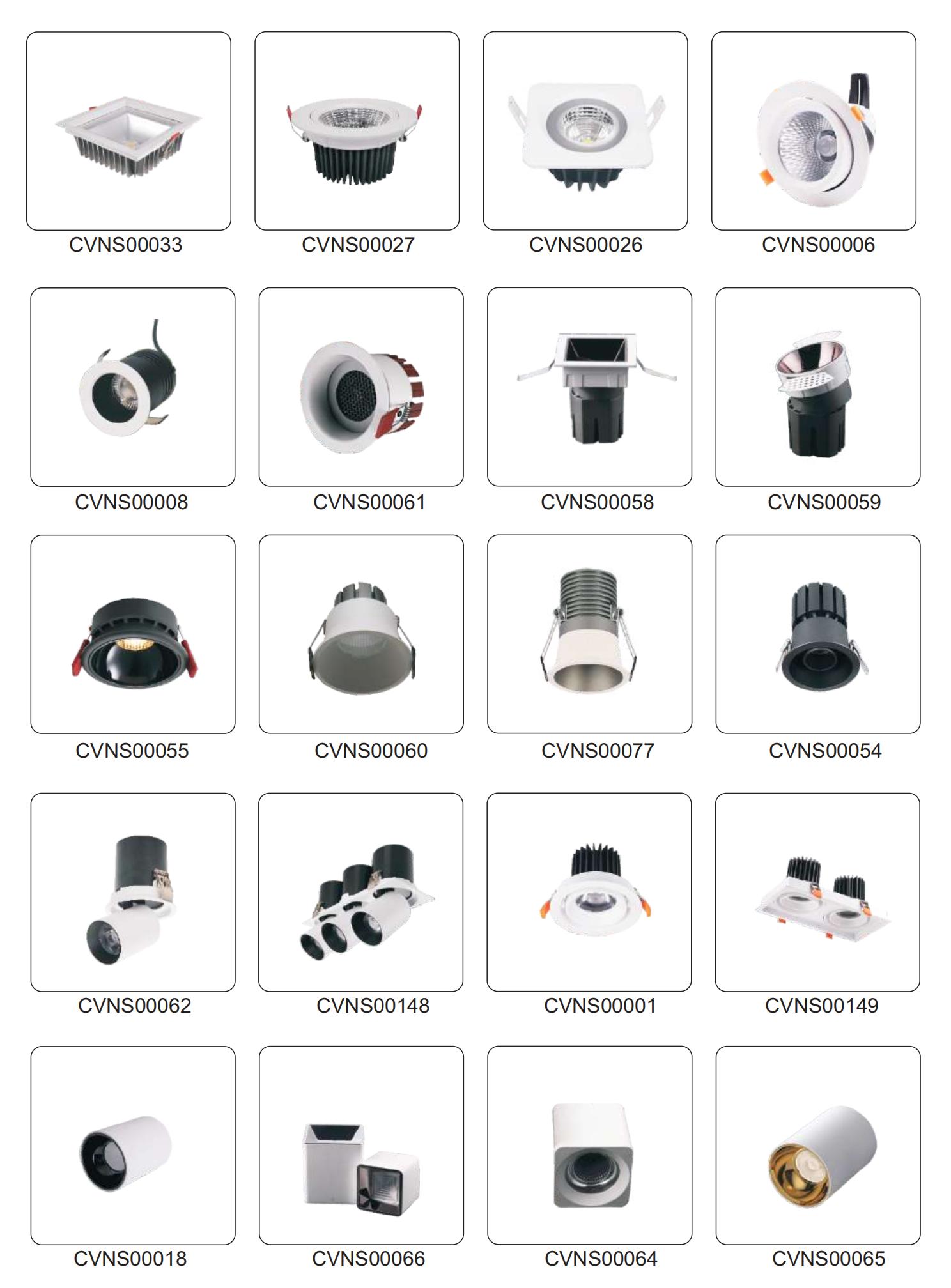News
Do you know the advantages and disadvantages of incandescent lamp, halogen lamp, fluorescent lamp
Do you know the advantages and disadvantages of incandescent lamp, halogen lamp, fluorescent lamp, energy-saving lamp and LED lamp?
Today, I will introduce incandescent lamp, halogen lamp, fluorescent lamp, energy-saving lamp, LED lamp, as well as their advantages, disadvantages and applications!
1、 Incandescent lamp
Do you know the advantages and disadvantages of incandescent lamp, halogen lamp, fluorescent lamp, energy-saving lamp and LED lamp
1. Working principle: incandescent lamp is also called tungsten filament lamp. The filament temperature of a lighted incandescent lamp is above 2000 ℃. It is because the hot filament produces light radiation that the electric lamp emits a bright light. Incandescent lamp is a kind of heat radiation light source.
2. Advantages: incandescent lamp is closest to sunlight, with low price, good color rendering, and color rendering index of 99 ~ 100; The color rendering index is an indicator of color authenticity. Generally, the higher the color rendering index is, the closer the color of the object under this kind of light is to the real color.
3. Disadvantages: only about 2% ~ 4% of the electric energy consumed by incandescent lamps can be converted into light energy, while the rest is lost in the form of heat energy. The energy conversion efficiency is very low, and the service life usually will not exceed 1000 hours. In other words, it is neither energy-saving nor short life.
Although the price of incandescent lamp is cheap and the color is good, it consumes a lot of power and has a short service life. Most of the electric energy is used for heating. Its performance is far lower than that of the new generation of light sources. It has been required to gradually withdraw from the market.
2、 Halogen lamp (commonly known as lamp cup, cup lamp and spotlight)
Do you know the advantages and disadvantages of incandescent lamp, halogen lamp, fluorescent lamp, energy-saving lamp and LED lamp
This kind of lamp cup is commonly used in most families.
1. Working principle: a variant of incandescent lamp. The principle is to inject halogen gas such as iodine or bromine into the bulb. At high temperature, the sublimated tungsten wire will chemically react with halogen, and the cooled tungsten will re solidify on the tungsten wire to form a balanced cycle to avoid premature fracture of the tungsten wire. Therefore, halogen bulbs have a longer life than incandescent lamps.
2. Advantages: it is also close to the continuous spectrum of sunlight, with good color rendering performance and color rendering index of more than 95; The price is also relatively cheap. Small size and good light control, so it is suitable for projective lighting occasions. And multi-purpose dimming equipment is used to adjust the brightness.
3. Disadvantages: without changing the essence of incandescent lamp, it still generates heat and emits light. Most of it is lost in the form of heat, and the light conversion efficiency is not high. The service life is increased to 2000-4000 hours.
The utility model has the advantages of low price, good color rendering, small volume and good light control. It is suitable for use in places where projection lighting is required and the color restoration of the illuminated object is relatively high.
3、 Fluorescent lamp (commonly known as lamp stick)
Do you know the advantages and disadvantages of incandescent lamp, halogen lamp, fluorescent lamp, energy-saving lamp and LED lamp
1. Working principle: fluorescent lamp is also called fluorescent lamp. It is a kind of lamp tube with external ballast and starter. Fluorescent tube is simply a closed gas discharge tube. The fluorescent lamp tube is filled with argon and a small amount of mercury, and the inner wall of the lamp tube is coated with fluorescent powder. Fluorescent lamps emit ultraviolet light in the process of gas discharge, and about 60% of the electric energy consumed can be converted into ultraviolet light. Phosphors absorb ultraviolet light and release visible light, while other energy is converted into heat energy.
2. Advantages: generally, the efficiency of converting ultraviolet light into visible light is about 40%. Therefore, the efficiency of fluorescent lamps is about 60% × 40% = 24% - about twice the power of tungsten filament lamps.
3. Disadvantages: the color rendering is relatively poor, especially in the early non trichromatic powder fluorescent lamps. Fluorescent lamps contain mercury and other harmful elements, which are harmful to the environment. In addition, ultraviolet radiation and stroboscopic phenomenon will also cause damage to people's eyes.
China is currently the country with the highest popularity of fluorescent lamps in the world. With people's increasing attention to health and environmental protection, fluorescent lamps are gradually withdrawing from the historical stage.
4、 Energy saving lamp
Do you know the advantages and disadvantages of incandescent lamp, halogen lamp, fluorescent lamp, energy-saving lamp and LED lamp
1. Working principle: energy saving lamp is a compact fluorescent lamp with ballast.
2. Advantages: small size, energy saving than incandescent lamps, and longer service life than incandescent lamps. In addition to white (cold light), energy-saving lamps now have warm light. Generally speaking, under the same wattage, an energy-saving lamp saves 80% energy than an incandescent lamp, prolongs the average life by 8 times, and the thermal radiation is only 20%.
3. Disadvantages: the color rendering index is low, and things will change color seriously; Fragile products, which add mercury and have no good recovery mechanism, cause environmental pollution that can not be ignored; When the ballast used in energy-saving lamp generates instantaneous high voltage, it will produce certain electromagnetic radiation.
Energy saving lamp has brought a lot of convenience to our life, but it also brings a lot of problems: mercury pollution, stroboscopic and electromagnetic radiation.
5、 LED light
Do you know the advantages and disadvantages of incandescent lamp, halogen lamp, fluorescent lamp, energy-saving lamp and LED lamp
1. Working principle: LED, namely light-emitting diode, is a solid-state semiconductor device that can convert electric energy into visible light. It can directly convert electricity into light.
2. Advantages: the luminous efficiency is higher than that of incandescent lamp and fluorescent lamp. Theoretically, the service life is very long, and the luminous time can reach 100000 hours. The actual product is basically 30000-50000 hours; No ultraviolet and infrared radiation; No lead, mercury and other polluting elements.
3. Disadvantages: there are many ways to realize white LED. The most common and mature one is to apply a layer of yellow phosphor on the blue chip to mix the blue light and yellow light into white light. Therefore, the material of phosphor has a great impact on the attenuation of white LED. At present, the problem of LED light attenuation still exists.
LED has the advantages of energy saving and environmental protection, and will inevitably become the mainstream lighting source in the future.
In my work, I used a 5-watt LED tube to replace a 40 Watt fluorescent lamp. I can change the circuit of the lamp holder slightly. There is no change in brightness, which is really very energy-saving. The 35 watt halogen lamp cup is also replaced with a 5-watt LED lamp cup. Although it saves power, there are other problems. The LED has too good condensing power. After replacement, the ground is light spots one by one, while the halogen lamp cup has high calorific value and high power consumption, but the light is uniform.
Let's talk about other small knowledge of lighting.
The color temperature is the scale representing the light color of the light source, and the unit is K (Kelvin). Generally, the light seen by human eyes is composed of the spectrum of seven colors. But some of them are blue and some are red. Color temperature is a method specially used to measure and calculate the color composition of light.
Generally speaking, the smaller the color temperature value, the more inclined to yellow warm light, and the larger the value, the more inclined to cold light.
Do you know the advantages and disadvantages of incandescent lamp, halogen lamp, fluorescent lamp, energy-saving lamp and LED lamp
In terms of color temperature, incandescent lamps are only 2700k or even 2500K. The color temperature is too low, which is easy to cause eye fatigue. For halogen lamps, the color temperature can generally be above 3000K or 3300K.
Too warm light, people will easily fatigue, too white light, that is, the color temperature is too high, will make people too excited, not suitable for the night. The color temperature of about 4000K makes people feel warm when awake. Under this color temperature, reading and learning are peaceful and efficient. Therefore, the warm white light with color temperature of 3000K ~ 4000K is more in line with people's visual needs.
Luminous efficiency of various lamps:
When we buy lamps or light sources, we often ask 'how many watts is the power of this lamp', or directly say to the boss' I want a 15 watt bulb '. This power data only reflects the indicator of power consumption, but our subtext is actually to 'have that brightness' lamp.
Even for the same 15 watt incandescent lamp, fluorescent lamp, energy-saving lamp and LED lamp, their illumination brightness is different and far from each other. Why?
Because different types of lamps with the same power have different luminous flux.
Luminous flux is the amount of light emitted by the light source in unit time. Illuminance is the luminous flux per second, and the unit is lumen. This value reflects the amount of visible light that people's eyes can actually receive, that is to say, it is a parameter based on people's perception and an objective embodiment of 'having that brightness'.
'so we can say 60 to our boss. ' However, few bosses can understand our needs, and few products will indicate the number of lumens on the package.
Luminous efficiency is a parameter of light source, which is the ratio of luminous flux to power. Different types of light sources have different luminous efficiency. Generally speaking, the luminous efficiency of incandescent lamps is about 10-15 lumens / watt, the luminous efficiency of energy-saving lamps is 50-100 lumens / watt, and the range of LED lamps is also relatively wide, mostly ranging from 60-120 lumens / watt.
The general living room and office space require 300 to 350 lumens per square meter. There is a simple algorithm. For example, the power of LED lights required for 30 square meters of office space, that is, 30 * 3 = 90 watts, that is, 90 watts of LED lights required for 30 square meters of living room can meet the demand.
In principle, to achieve the same luminous flux, LED lamps only need lower power. Therefore, LED lamps are a new generation of energy-saving and environment-friendly light sources.
Led light or Led lamp UAE, Saudi Arabia, Qatar, Kuwait, Oman, Abu Dhabi, Dubai, Sharjah
Shenzhen Covanns Electronics Co., Ltd. is a professional LED light supplier in China. Please click the WhatsApp icon on the right side to chat with us.
Please visit our website for more information: www.covanns.com







 English
English